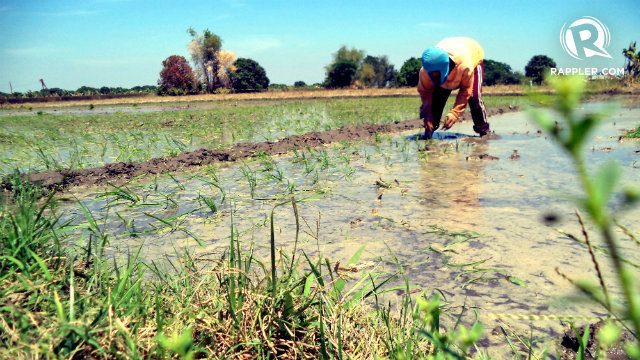SUMMARY
This is AI generated summarization, which may have errors. For context, always refer to the full article.

MANILA, Philippines – The budget department announced on Wednesday, March 2, that it had released to the National Irrigation Administration (NIA) some P12.3 billion ($ 260.1 million), including funds to address the impact of El Niño this year.
Of the total funds released, P11.8 billion ($249.5 million) will be used for the expansion of irrigation across the country, while the remaining P500 million would be NIA’s appropriation for Quick Response Funds (QRF). NIA is an agency attached to the Department of Agriculture.
In a statement, Budget Secretary Florencio Abad said the latest release is part of NIA’s 2016 budget and will go to Irrigation Network Services and some locally-funded projects.
“The remaining portion of NIA’s P32.7-billion budget for 2016 will follow once the agency submits the necessary documentary requirements,” Abad said.
The Irrigation Network Services has been appropriated a total of P10.1 billion ($ 213.56 million). It consists of projects that will expand irrigation systems and the rehabilitation and maintenance of pumping systems and groundwater systems.
Among its big ticket projects is the Balog-Balog Multipurpose project in Tarlac which costs P3 million ($ 63,438). Irrigation works damaged by Super Typhoon Yolanda (Haiyan) and climate change adaptation were also appropriated for.
Budget for El Niño
According to Abad, the 500-million allocation in Quick Response Funds will cover NIA’s requirements to address the impacts of El Niño phenomenon.
El Niño is a weather phenomenon characterized by an unusual increase in ocean surface temperatures or warming in the center and eastern equatorial Pacific Ocean.
The state weather bureau Pagasa warned of the potential development of El Niño in the country as early as May 2014. It officially announced the onset of the El Niño in the country in March 2015.
This year’s El Niño has already passed its peak but is expected to last until the second quarter of 2016. (READ: El Niño 2015: How can Filipinos better understand it?)
“We know that many communities are severely affected by the El Niño phenomenon. Since we are only in the first quarter of the year, we cannot identify yet the budgetary savings to be used for interventions for El Niño,” the budget chief said.
Proposed measures to address the impacts of El Niño may be funded by agencies’ regular budgets as long as these measures fall under its mandate, he said.
Concerned agencies were also advised to maximize appropriations and use the QRF as a stand-by fund in helping normalize the condition of communities in areas under state of calamity.
Abad said that if the regular budget and the QRF are insufficient to fund El Niño-related measures, agencies may request for additional funds. It will be charged against the National Disaster Risk Reduction Fund. – Rappler.com
*US$1 = P47.29
Add a comment
How does this make you feel?
There are no comments yet. Add your comment to start the conversation.